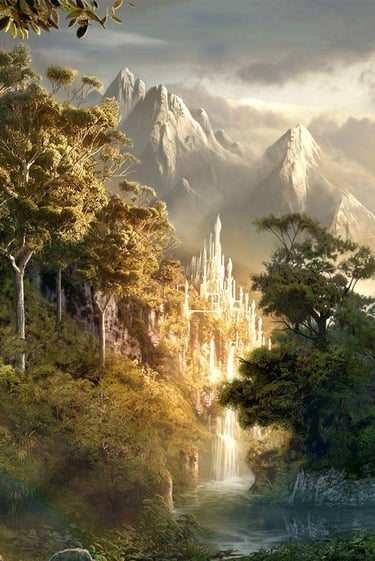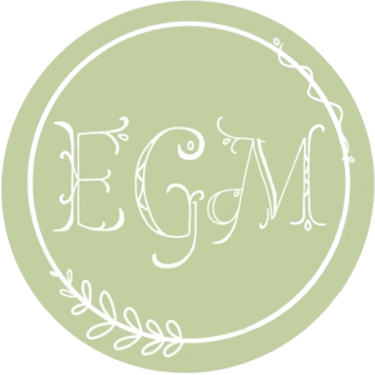One Does Not Simply Worldbuild- Tips From the Master of Worldbuilding
Have you ever wanted to create a fantasy world as deep and alive as a certain famous trilogy's?
WRITING
Emma G. McKee
3/11/20256 min read
Hello dear reader, and welcome back to my blog! Today I want to share some of my favorite tips about worldbuilding, which can be stressful, especially if you write fantasy!
If you don’t know already, worldbuilding is one of my favorite parts of the writing process. I’ve always loved exploring different worlds unique from our own, and imagining what it would be like to live in them. Perhaps this is why fantasy is my favorite genre!
When most writers think about worldbuilding though, they’re likely to think of one of the greatest fantasy stories written (in my opinion!): The Lord of the Rings.
This can be off-putting for some writers. If they’re a big fan of Tolkien’s writing, they may be worried they’ll never live up to his expansive worldbuilding. Or, on the opposite side of the spectrum, they may worry that Tolkien’s world is too overused, with dragons and elves and dwarves being common features of fantasy worlds.
But I believe that we as writers can learn a lot from Tolkien’s writing. Sure, elves and dwarves may be a classic fantasy trope, and yes, Tolkien’s worldbuilding is quite impressive, but in writing Lord of the Rings he used worldbuilding strategies that are still applicable today– in any genre! So I invite you to step into the world of Tolkien with me, and we can explore how to create worlds together.
Tip #1: History became legend, legend became myth…
One of the defining features of Tolkien’s world is the rich history. Every page has a callback to some ancient event that is remembered through song and tale. Most books have some kind of history, but few are as deep and encompassing as the history of Middle-Earth. Tolkien’s history stretches all the way back to the creation of Middle-Earth, and centuries worth of wars and kingdoms and exploration occur before the events of the trilogy.
I think the most important part about Tolkien’s history, though, is the fact that everything is connected. The plot is connected to the history, and vice-versa. The entire world is one big web of stories interwoven to create one of the greatest sagas ever told!
When creating your own world, think about the history (in fact, I’d say to start with it!). What events could have transpired that led to the formation of your kingdoms, empires, or rebel factions? What did your land look like ages and centuries ago? And more importantly, what does this have to do with your plot? How has the history of your world acted like one big foreshadowing of your main events? How are they connected?
Tip #2: The road goes ever on and on…
The Lord of the Rings is filled with fantasy races and cultures of all kinds– we even mentioned some earlier! But elves and dwarves (and hobbits!) aren’t just there for looks. When you think about it, Tolkien really never adds anything into his stories without a purpose. Most fantasy tales have unicorns and dragons and all manner of fantasy creatures, but there isn’t really a reason for their existence other than “just because” or “it’s fantasy, I’m supposed to”.
Tolkien gave each of his fantasy races a purpose for being there– and more than that, he gave them all an intertwining history. Having these distinctive races and cultures makes Middle-Earth feel so much larger, even when we don’t know much about them at first. Just knowing there’s more to discover in a fantasy world adds a feeling of adventure to the story, keeping readers immersed in your world.
And once again, any races, cultures, and creatures you add into your world need to be connected to the central plot. They should have a purpose and a reason for existing in your world. When creating these things, think about how they came to be. How did their culture evolve? What purpose do they serve in your world? Why are these people important? If removed, would there be any drastic changes? How are they connected to everything?
Tip #3: Someone else always has to carry on the story…
The plot of Lord of the Rings is nothing short of epic, and has inspired countless other fantasy stories over the years. But what makes it so compelling? Is it the heroism and bravery of the characters? The themes of hope and unity? Or is it something deeper?
When you think about it, you can see that the story of the One Ring has been carried on throughout thousands of years, from person to person. It was forged by Sauron, taken by Isildur, found by Gollum, rescued by Bilbo, then given to Frodo to be destroyed in one of the greatest quests of all time. But the reason this quest has the finality it does is because this Ring had been a threat for centuries, and the time had finally come to be rid of it.
It’s because of Tolkien’s history that the plot of the books is so alive. Again, remember connection. If you connect your plot to the events of your world’s past, you’re sure to have a book that readers will love and be immersed in.
When worldbuilding, think about how this history will affect your plot. How can you carry on the story of your world through time? How will your people be affected by this continuity? How can you connect the events of your history to your plot?
Bonus Tip #4: Not all those who wander are lost…(for they may have a map!)
I’m sure everyone’s seen the famous Map of Middle-Earth; that old drawing of a much-loved fantasy land. In my humble opinion, that map is a work of art, but maps serve a greater purpose than looking nice.
Having a map adds a lot to a book, especially a fantasy book with a world so different from our own. For one, they can give readers a visual outline of what your world looks like and where your characters are compared to other places on the map. I frequently find myself referring back to maps as I read– it’s quite fun to track the characters as they go on their journeys!
But did you know maps are especially helpful to the writer, even before they begin writing their book?
One of the first things I did when beginning to worldbuild a project of mine was draw a map. I especially enjoy drawing maps, and took time to make it look clean and professional. But as I was drawing, I was having to come up with all sorts of foundational aspects of my fantasy world, such as geographical features, biomes, landmarks, and more. Doing so also gave me ideas for what parts of my world were inhabited, and by who.
Now that I’m in later stages of worldbuilding for that project, I have a map to reference to. When writing my history I can look back and map out battles and territories and all sorts of things that will give my world that deep, alive feel. And when I begin writing the books one day, I’ll have that map to look at and remind me of everything in my world.
You don’t have to have a map, especially if you only want to do some light worldbuilding. But they can be helpful in several different ways, and if worldbuilding is one of the stronger parts of your writing project, I’d advise you to invest some time in creating one that you love. It doesn’t have to be fancy or ornate– mine is still being added to and changed as I continue worldbuilding. But simply having that visual representation has helped motivate me to keep building my world.
So, now what?
As you begin building your world, think about these four tips and find ways to implement them. You might start with creating a map as a base to build everything from. Then, you might begin writing the history of your world and how all of your creatures, races, and cultures interacted throughout time. Once you do that, you can think through how the plot of your books is connected to your history and people, creating a strong, tightly-woven world.
J. R. R. Tolkien’s Lord of the Rings is one of the most influential books ever written, for several reasons. I like to think it was all the time Tolkien spent on perfecting his world– after all, that’s where the story will take place. The backdrop, if you will, to the greatest fantasy saga ever told.
But the principles and strategies Tolkien used to create that world are still applicable today, and by using them you can build a world as deep and connected as Middle-earth. Worldbuilding can be hard, tedious, and sometimes scary. But in the end, it’s so gratifying to know that this fantastic world is something you created. These people and places came from your own mind. And you can use all of it to honor Christ through Story, because the Lord is the ultimate worldbuilder.
What was your favorite tip? What’s one unique thing about your world? Let me know in the comments!
See you among the shelves,
Emma G. McKee


Leave a Comment!
Related Posts


Emma G. McKee
© 2025 Emma G. McKee
All rights reserved.
Credit for photos to Unsplash and Emma G. McKee unless otherwise stated.
Credit for background videos to Pexels.
